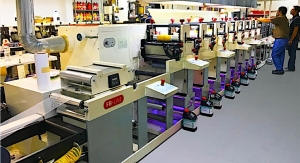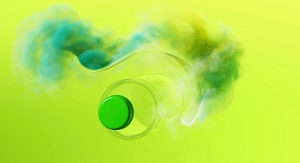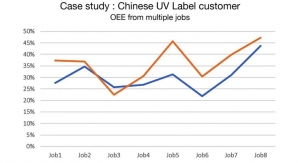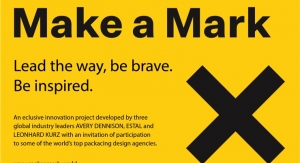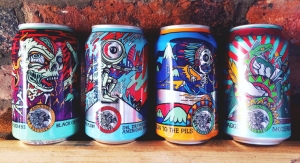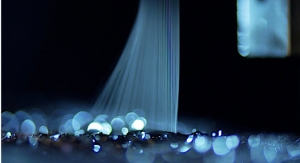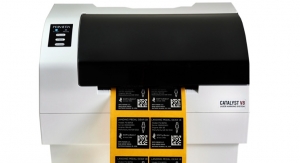Jack Kenny10.12.18
Every time I see a piece of Apple packaging I feel good. I appreciate minimalism in product, label and packaging design, and the impact of color or the effective absence thereof. Apple knows how to use package and product design to stimulate the production of endorphins in a good many consumers.
The smart device company doesn’t use a lot of color in its designs, but when it does, the effect is striking. That’s because the artistic team at Apple understands the art of color and how to use it in marketing. So does Samsung: Its Exynos processor chips are encased in boxes that pair opposing pastels – subfusc blue and dusty rose – to pleasing effect.
And yet … Who would have thought that pink and orange would work together? Dunkin Donuts, that’s who.
Color psychology. Color theory. These terms are taken seriously by designers, as well as product marketers, who understand the consumer mind. The psychology has been and continues to be explored scientifically using both neurobiological and statistical research. The good news is that the findings are digestible and understandable by generalists like me.
Works Design Group, a creative agency in New Jersey, says that color, with its ability to influence emotion, is crucial in packaging. “Colors are often used to trigger sensory reactions and emotions, and to prompt consumers to make assessments about brands,” the company says, adding that consumers say color is the primary factor when deciding which product to buy. Researchers have found that “60 to 90% of people make snap judgments about products within 90 seconds based on color alone. Prudent use of colors can contribute not only to differentiating products from competitors, but also to influencing moods and feelings – positively or negatively – and therefore, to attitude towards certain products. Given that our moods and feelings are unstable and that colors play roles in forming attitude, it is important that managers understand the importance of colors in marketing.”
We consumers prefer brands that are immediately recognizable, and the first outstanding element is color. Think Coca-Cola. Color Research and Application, a scientific journal, says new brands should employ strong colors to attract attention in order to compete with the top dogs.
Here are some thoughts from experts about the impact on viewers of basic colors. (Noteworthy: “The more colors you use for your packaging colors, the less serious the product. A simple combination of two colors can look more elegant and classy, depending on the type of decoration of course.” — Empowered by Color.)
White: Innocence, equality, new beginnings. It is basic and conservative, but also clean and simple, and is a pure palette for image and message.
Black: Power, authority, elegance, mystery. It’s commonly used with white, but it can add strength to the emotion stimulated by other colors.
Blue can stand for trust, honesty, reliability, strength and unity. The darker the blue, the more serious and conservative the portrayal. Lighter blue softens the image. Some see the sea and sky in blue, offering serenity and intelligence. Product marketers seem to have taken the shades of blue out to an infinite number.
Purple: high ideals, imagination, spirituality. Popular among holistic products. The color tends to be more attractive to the female and youth market, though its appeal to males is growing.
Green is the ideal earth – balance, harmony, restoration. In color psychology it relates to security, wealth and growth. Dark green adds a luxury component, while muted greens suggest environmental well being.
Red is passion, warmth, strength, even ferocity.
Orange is optimism, self-confidence, extroversion, relaxation of inhibition.
Yellow is emotion and cheer. It’s mostly used in combination with other colors, and works best when used in pure form, without dilution or amplification.
Age and culture
There’s more to color than the adjectives. Target markets can vary dramatically by age and culture. “When designing your packaging, bear in mind that color preferences differ based on age and sex, too,” reports Packhelp.com, a site for people who want to design personal packaging. “Blue is by far the most liked color, notwithstanding the age. If you are targeting kids, avoid red – your design should mostly be green and blueish. Teenagers and people in their 30s are prone to like purple, which can be a nice novelty in a packaging design. Choosing black will appeal to younger people. And remember this golden rule: most people do not like orange.
“When it comes to sex differentiation, men really like blue. More than 57% of them admit liking blue the most. Green and black are also a good choice for a masculine brand. Women like blue too, but purple, red and green are also good choices to be feminine friendly.”
Colors are viewed and employed in different ways among dissimilar cultures. A strong example is funeral attire. Ancient Romans wore dark togas to symbolize mourning, a practice that grew during the Renaissance and has remained the norm among Christian countries. Hindus and Buddhists, on the other hand, commonly wear white.
“Multicultural packaging became relevant when products were being introduced into an international market,” wrote Kyle Valdillez of California Polytechnic State University in a paper titled Color and Brand Design for Multicultural Packaging. “It is the combination of features, such as logos, colors, legal requirements, religious beliefs and values, that make up an effective way to communicate a product to other cultures. It is a way to transcend language barriers and increase brand recognition.”
Valdillez points to national flags for illustration. “Within the American culture, the colors of red, white and blue, exemplify our country and the freedom we experience as citizens.” Japan, on the other hand, uses “both intense and soft colors to communicate deeper emotions.” The Japanese flag is a red circle representing life and vitality, superimposed in white, representing purity, death and rebirth, he says.
In 2009, Proctor and Gamble (P&G) introduced a more affordable form of laundry detergent, hoping to appeal to a broader market. “Inspired by a P&G detergent in Spain, P&G came up with Tide Basic in hopes to broaden their appeal to the Hispanic culture. Although some frowned upon this, as it would contradict the current higher-end image of Tide, P&G continued with the development and soon had to decide upon which color they should use for the packaging. Preliminary consumer tests had picked yellow over the orange packaging, because it accommodates overlapping cultures, the Hispanic culture within the American culture.”
“Color is the least expensive way of changing the product, wrote Mubeen Aslam, in the Journal of Marketing Communications.
Valdillez concludes, “Whether a company is trying to rebrand its product or simply making an update, the choices are varied. If they want to rebrand it, however, then they should use colors that weren’t originally identifiable with the old product because dissimilar colors will get more attention. On the other hand, if they want to update it, and their product is already identifiable by consumers, like Coca Cola, then they should keep the product in those colors. This way, it will not confuse their consumers or increase the time it takes for consumers to realize what is going on.’
Label converters discuss the pros and cons of color performance with customers all the time. Though they rarely recommend major changes, a modification here and there – based on the printer’s vast knowledge and experience with inks and their performance – will improve the finished product and is worth suggesting. Color psychology is not strictly the province of academics. It’s put into practice in prepress and on the press itself.
The author is president of Jack Kenny Media, a communications firm specializing in the packaging industry, and is the former editor of L&NW magazine. He can be reached at jackjkenny@gmail.com.
The smart device company doesn’t use a lot of color in its designs, but when it does, the effect is striking. That’s because the artistic team at Apple understands the art of color and how to use it in marketing. So does Samsung: Its Exynos processor chips are encased in boxes that pair opposing pastels – subfusc blue and dusty rose – to pleasing effect.
And yet … Who would have thought that pink and orange would work together? Dunkin Donuts, that’s who.
Color psychology. Color theory. These terms are taken seriously by designers, as well as product marketers, who understand the consumer mind. The psychology has been and continues to be explored scientifically using both neurobiological and statistical research. The good news is that the findings are digestible and understandable by generalists like me.
Works Design Group, a creative agency in New Jersey, says that color, with its ability to influence emotion, is crucial in packaging. “Colors are often used to trigger sensory reactions and emotions, and to prompt consumers to make assessments about brands,” the company says, adding that consumers say color is the primary factor when deciding which product to buy. Researchers have found that “60 to 90% of people make snap judgments about products within 90 seconds based on color alone. Prudent use of colors can contribute not only to differentiating products from competitors, but also to influencing moods and feelings – positively or negatively – and therefore, to attitude towards certain products. Given that our moods and feelings are unstable and that colors play roles in forming attitude, it is important that managers understand the importance of colors in marketing.”
We consumers prefer brands that are immediately recognizable, and the first outstanding element is color. Think Coca-Cola. Color Research and Application, a scientific journal, says new brands should employ strong colors to attract attention in order to compete with the top dogs.
Here are some thoughts from experts about the impact on viewers of basic colors. (Noteworthy: “The more colors you use for your packaging colors, the less serious the product. A simple combination of two colors can look more elegant and classy, depending on the type of decoration of course.” — Empowered by Color.)
White: Innocence, equality, new beginnings. It is basic and conservative, but also clean and simple, and is a pure palette for image and message.
Black: Power, authority, elegance, mystery. It’s commonly used with white, but it can add strength to the emotion stimulated by other colors.
Blue can stand for trust, honesty, reliability, strength and unity. The darker the blue, the more serious and conservative the portrayal. Lighter blue softens the image. Some see the sea and sky in blue, offering serenity and intelligence. Product marketers seem to have taken the shades of blue out to an infinite number.
Purple: high ideals, imagination, spirituality. Popular among holistic products. The color tends to be more attractive to the female and youth market, though its appeal to males is growing.
Green is the ideal earth – balance, harmony, restoration. In color psychology it relates to security, wealth and growth. Dark green adds a luxury component, while muted greens suggest environmental well being.
Red is passion, warmth, strength, even ferocity.
Orange is optimism, self-confidence, extroversion, relaxation of inhibition.
Yellow is emotion and cheer. It’s mostly used in combination with other colors, and works best when used in pure form, without dilution or amplification.
Age and culture
There’s more to color than the adjectives. Target markets can vary dramatically by age and culture. “When designing your packaging, bear in mind that color preferences differ based on age and sex, too,” reports Packhelp.com, a site for people who want to design personal packaging. “Blue is by far the most liked color, notwithstanding the age. If you are targeting kids, avoid red – your design should mostly be green and blueish. Teenagers and people in their 30s are prone to like purple, which can be a nice novelty in a packaging design. Choosing black will appeal to younger people. And remember this golden rule: most people do not like orange.
“When it comes to sex differentiation, men really like blue. More than 57% of them admit liking blue the most. Green and black are also a good choice for a masculine brand. Women like blue too, but purple, red and green are also good choices to be feminine friendly.”
Colors are viewed and employed in different ways among dissimilar cultures. A strong example is funeral attire. Ancient Romans wore dark togas to symbolize mourning, a practice that grew during the Renaissance and has remained the norm among Christian countries. Hindus and Buddhists, on the other hand, commonly wear white.
“Multicultural packaging became relevant when products were being introduced into an international market,” wrote Kyle Valdillez of California Polytechnic State University in a paper titled Color and Brand Design for Multicultural Packaging. “It is the combination of features, such as logos, colors, legal requirements, religious beliefs and values, that make up an effective way to communicate a product to other cultures. It is a way to transcend language barriers and increase brand recognition.”
Valdillez points to national flags for illustration. “Within the American culture, the colors of red, white and blue, exemplify our country and the freedom we experience as citizens.” Japan, on the other hand, uses “both intense and soft colors to communicate deeper emotions.” The Japanese flag is a red circle representing life and vitality, superimposed in white, representing purity, death and rebirth, he says.
In 2009, Proctor and Gamble (P&G) introduced a more affordable form of laundry detergent, hoping to appeal to a broader market. “Inspired by a P&G detergent in Spain, P&G came up with Tide Basic in hopes to broaden their appeal to the Hispanic culture. Although some frowned upon this, as it would contradict the current higher-end image of Tide, P&G continued with the development and soon had to decide upon which color they should use for the packaging. Preliminary consumer tests had picked yellow over the orange packaging, because it accommodates overlapping cultures, the Hispanic culture within the American culture.”
“Color is the least expensive way of changing the product, wrote Mubeen Aslam, in the Journal of Marketing Communications.
Valdillez concludes, “Whether a company is trying to rebrand its product or simply making an update, the choices are varied. If they want to rebrand it, however, then they should use colors that weren’t originally identifiable with the old product because dissimilar colors will get more attention. On the other hand, if they want to update it, and their product is already identifiable by consumers, like Coca Cola, then they should keep the product in those colors. This way, it will not confuse their consumers or increase the time it takes for consumers to realize what is going on.’
Label converters discuss the pros and cons of color performance with customers all the time. Though they rarely recommend major changes, a modification here and there – based on the printer’s vast knowledge and experience with inks and their performance – will improve the finished product and is worth suggesting. Color psychology is not strictly the province of academics. It’s put into practice in prepress and on the press itself.
The author is president of Jack Kenny Media, a communications firm specializing in the packaging industry, and is the former editor of L&NW magazine. He can be reached at jackjkenny@gmail.com.


